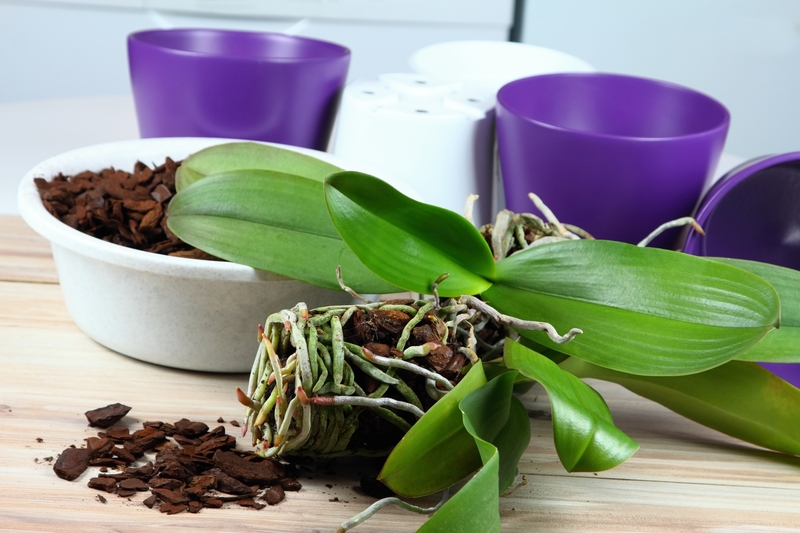Ground Cover Plants: Transform Your UK Garden with These 9 Options
Posted on 01/06/2024
Are you tired of constantly mowing your lawn or struggling to keep weeds at bay in your garden? If so, it might be time to consider incorporating ground cover plants into your UK garden. These low-growing plants are perfect for adding depth and texture to your outdoor space while also minimizing maintenance. In this article, we will explore 9 options for ground cover plants that will transform your UK garden.
What are Ground Cover Plants?
Ground cover plants are low-growing and spreading plants that are used to cover the surface of the soil in a garden or landscape. They can range from flowering to non-flowering plants and are known for their ability to suppress weeds and prevent erosion. Ground cover plants can also provide a natural-looking carpet-like effect, making them a popular choice for filling in gaps in gardens and creating a cohesive look.

The Benefits of Ground Cover Plants
The use of ground cover plants offers numerous benefits for UK gardens:
1. Low Maintenance: Unlike lawns, which require frequent mowing and watering, ground cover plants require minimal maintenance once established. This makes them an ideal choice for busy homeowners or those looking to reduce the time spent on gardening tasks.
2. Weed Control: With their dense foliage, ground cover plants can effectively suppress weeds by shading out the soil and preventing weed seeds from germinating. This reduces the need for using harmful chemicals like herbicides in your garden.
3. Erosion Control: In areas prone to erosion, such as slopes, ground cover plants can help stabilize the soil and prevent it from washing away during heavy rainfalls.
4. Attractive Appearance: Ground cover plants come in various colors and textures, making them an excellent way to add visual interest to your garden while maintaining a neat appearance.
9 Options for UK Gardens
1. Alchemilla mollis (Lady's Mantle): This perennial plant produces clusters of tiny yellow flowers in late spring to early summer and has distinctive scalloped leaves. It is a low-maintenance option that can grow in both full sun and partial shade.
2. Vinca minor (Periwinkle): Also known as myrtle, this evergreen ground cover produces vibrant blue/purple flowers in spring and is suitable for most soil types. It can thrive in both sunny and shady areas, making it a versatile choice for UK gardens.
3. Ajuga reptans (Bugleweed): With its glossy purple or bronze foliage and spikes of blue or pink flowers in the spring, this hardy perennial adds a splash of color to any garden. It can tolerate a wide range of growing conditions, including shade and poor soil.
4. Potentilla tridentata (Cinquefoil): This low-growing shrub forms a dense mat of dark green foliage with bright yellow flowers from early to mid-summer. It thrives in moderately fertile, well-drained soil and prefers full sun.
5. Sedum spurium (Stonecrop): This hardy succulent plant features fleshy green leaves and produces star-shaped pink or white blooms in summer. It is ideal for dry, sunny areas and is known for its ability to withstand heat and drought.
6. Lysimachia nummularia (Creeping Jenny): This fast-growing ground cover has trailing stems with small round leaves and produces small yellow flowers in the summer months. It can be used to cover large areas quickly, making it an excellent solution for erosion control.
7. Pachysandra terminalis (Japanese Spurge): This evergreen perennial has glossy green leaves and produces white flowers in late spring. It performs well in shaded areas with moist, well-drained soil.
8. Tiarella cordifolia (Foamflower): With its heart-shaped leaves and fluffy white or pink flowers, this low-maintenance ground cover adds a delicate and graceful touch to any garden. It thrives in shady areas and can tolerate a wide range of soil conditions.
9. Geranium macrorrhizum (Bigroot Geranium): This hardy geranium produces fragrant pink or magenta flowers in early summer and has attractive bronze foliage. It is suitable for most soil types and can thrive in both full sun and partial shade.
Pros and Cons
Pros:
- Low maintenance
- Weed control
- Erosion control
- Attractive appearance
Cons:
- Can be aggressive and invasive
- May take time to establish
- Limited variety compared to other plants
Tips for Growing Ground Cover Plants
1. Prepare the Site: Before planting, clear the area of weeds and debris and ensure the soil is well-drained.
2. Choose the Right Plant: Consider the growing conditions in your garden, such as sun exposure and soil type, when selecting ground cover plants.
3. Plant in Groups: To achieve a uniform look, plant ground cover plants in groups rather than scattering them randomly.
4. Mulch: Applying a layer of mulch around the plants will help retain moisture in the soil and prevent weeds from growing.
5. Regular Watering: While ground cover plants are generally low-maintenance, they still require regular watering during their first growing season to establish strong roots.

Takeaways
Ground cover plants offer many benefits for UK gardens, including low maintenance, weed control, erosion control, and attractive appearance. When choosing ground cover plants for your garden, consider the growing conditions, select appropriate plants, and provide proper care to help them thrive. With these tips in mind, you can successfully transform your outdoor space with these versatile and practical plants.
Conclusion
Ground cover plants are a fantastic addition to any UK garden, offering both aesthetic appeal and practical benefits. With a variety of options that can thrive in different growing conditions, there is sure to be a ground cover plant that will suit your garden's needs. By incorporating these plants into your landscape, you can enjoy a beautiful and low-maintenance garden all year round.



